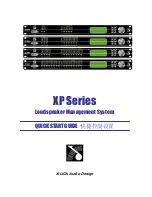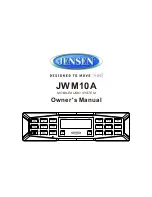
I
T
A
L
IA
N
O
E
N
G
L
IS
H
F
R
A
N
Ç
A
IS
E
S
P
A
Ñ
O
L
P
O
R
T
U
G
U
Ê
S
D
E
U
T
S
C
H
Mi 2375
13
Example of composition of push-buttons with programming of the user’s
address associated to the first button and connections between several
modules
Note
. In this example the user’s address
3 is not achievable; do not code any user
with the address 3.
Programming of the operating modes
enter the programming mode as
described in the specific paragraph.
Dial on the keypad of
TD4100PL
or
PDX4000
the code you whish to program
(see table 2) and press button “enter”; an
acknowledge tone will be heard.
Exit the programming mode as described
in the specific paragraph.
In the case of sending more codes only
the last one is stored.
Terminals P1 and P2
Connecting to the terminals P1 and P2
of the digital encoder the two buttons of
modules PL42PDG, PL42PCDG or
PL12P they will call users with the two
next adresses from the starting user’s
address of buttons programmed in the
digital encoder.
Example:
if the starting user’s address
of buttons programmed in the digital
encoder is equal to 0, by pressing the
two buttons of modules PL42PDG,
PL42PCDG or PL12P, connected to P1
and P2, they will call respectively users
coded with the addresses 1 and 2, the
user’s address called by P1 and P2 has
no relation with the address associated
to the first button of the digital encoder.
Audio Connection
The digital encoder should be connected
to an audio or video module by means of
4 wires joined to the terminals 1, 2, 3 and
4.
2) 10 call videointercom push-but-
ton panel with PL42PDG, CD4134PL
and PL24S
4) 16 call videointercom push-but-
ton panel with PL40PDG, CD4138PL
and PL228S
3) 18 call intercom push-button panel
with PL122P, CD4138PL and PL228S
Note
. In this example the user’s address
3 is not achievable; do not code any user
with the address 3.
1) 8 call intercom push-button panel
with PL10P, CD4134PL and PL24S
Signalling of busy line.
If more than one entrance is present on the
same installation it would be advisable to have
a signalling of busy line when another external
station is already in communication. This can
be achieved, by the LED present on the audio
or audio/video module which will flash when
the line is busy, connecting their terminals L+
and L- to the terminals L+ and -present on the
digital encoder.














































